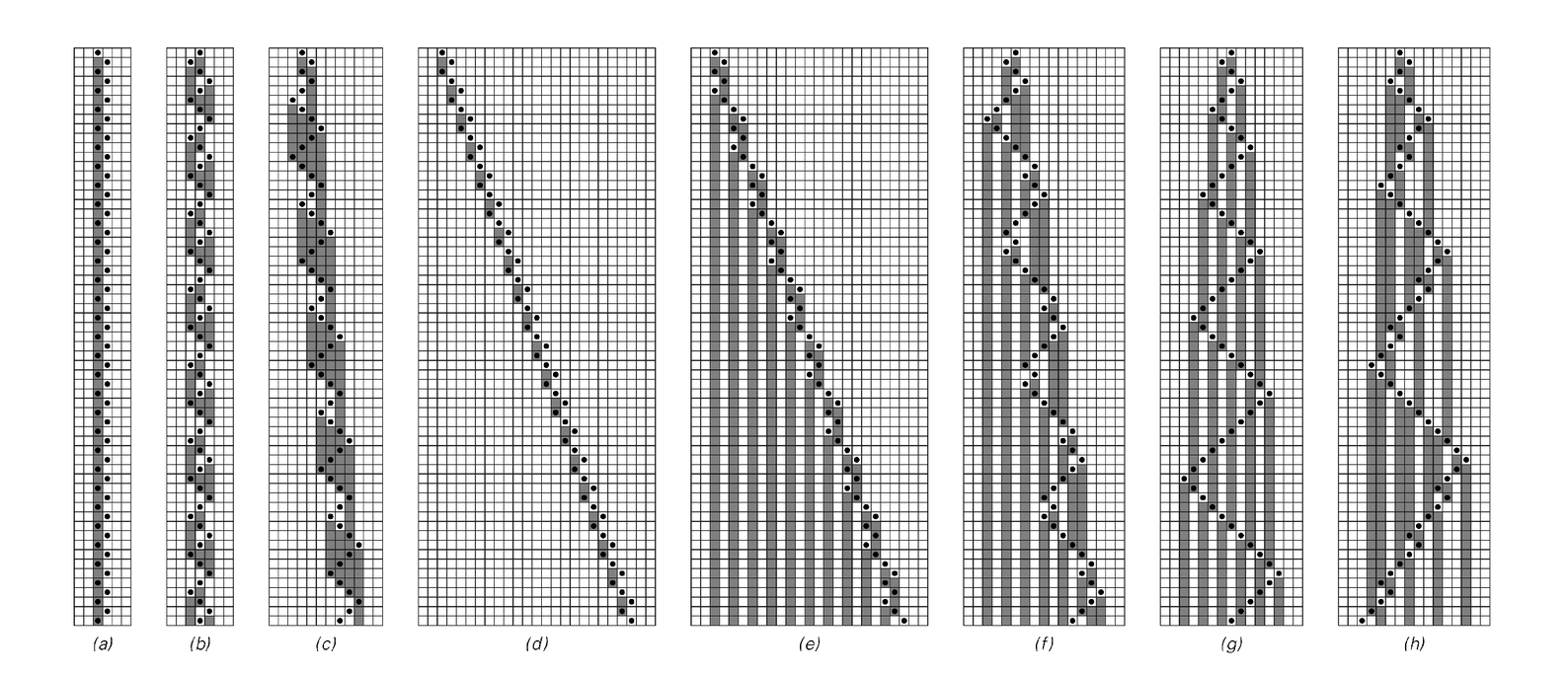except that the whole pattern shifts systematically to the right, and in cases (e) and (f) a sequence of stripes is left behind.
But with a total of 218 out of the 65,536 possible rules, one gets somewhat different behavior, as cases (g) and (h) below show. The active cell in these cases does not move in a strictly repetitive way, but instead sweeps backwards and forwards, going progressively further every time.
The overall pattern produced is still quite simple, however. And indeed in the compressed form below, it is purely repetitive.


Examples of mobile automata with various rules. In cases (a) through (f) the motion of the active cell is purely repetitive. In cases (g) and (h) it is not. The width of the pattern in these cases after t steps grows roughly like √2t.

Compressed versions of the evolution of mobile automata (g) and (h) above, obtained by showing only those steps at which the active cell is further to the left or right than it has ever been before.